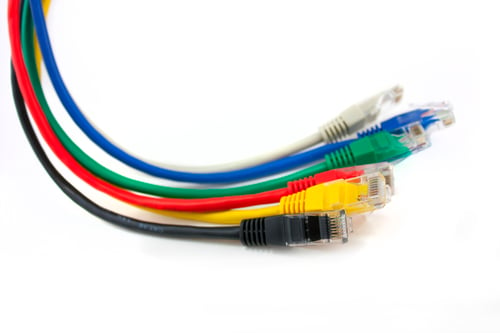Network Cabling Enables Digital Transformation
In today's digital age, data runs the show.
 But with many small to mid-size businesses (SMBs) lacking a reliable network cabling infrastructure, business efficiency and connectivity gets bogged down.
But with many small to mid-size businesses (SMBs) lacking a reliable network cabling infrastructure, business efficiency and connectivity gets bogged down.
To improve efficiency and connectivity of an SMB, business owners need three things: modern-day network cabling, an organized network infrastructure, and a dedicated team of network cabling technicians.
What is Network Cabling?
"Cabling is the highway that your data rides on," says Ken Hennings, Cincinnati Local Business Unit (LBU) Manager. "The Local Area Network (LAN), whether it is wired or wireless, requires a Cat6 cable to broadcast its signal on."
The most commonly used types of network cabling for SMBs include Cat6, Cat6a, Cat7, and now Cat8. Each of these types of network cabling provide different levels of performance, so the mantra "one size fits all" doesn't apply here.
As a network cabling veteran, Hennings says the cabling requirements depend on the objectives of the business, the size of the business, and configuring how everyone can connect reliably to the network.
Category 6 cabling (Cat6 cabling) for example is the standard cabling used as it is cost-effective. At a higher grade, the Category 6A cabling allows for improved transmission speeds.
In layman's terms: more data can be pushed from the network across the cable.
"Five years ago, you would install a wireless access point on a legacy network with limited PoE ports and the device would still need a power source," Hennings said. "With the advancements in Cat6 and 6a cabling and the improved network PoE products available, these cables now carry data and power to power those devices, whether the device is a camera, access points, or any other ancillary device on the network."
How is Network Cabling Used in Businesses?
Whether at home or in a small office space, cabling is primarily used to connect computers and landline telephones to the LAN. But there are many more applications for category cabling.
"Any devices from the Local Area Network, to the physical security technology, to the plant floor, all are running on a distributed network of category cabling of some kind," Hennings said. "All businesses need this cabling, and it is an important part of any IT network."
While certain devices are considered "wireless," the device is still connected using cat 6 network cabling. One example of this is when employees connect their smartphone or work laptop to the network wirelessly.
How Manufacturing Clients Use Network Cabling
Industrial and manufacturing facilities are embracing the need to digitally transform their business to remain efficient and reduce downtime. Facility operators are leveraging the latest technologies, such as CNC machining, to enable these facilities to see when machinery needs servicing and where inefficiencies linger.
However, industrial technology like CNC machining (computer numerical control) requires connection to the local network because it is a pre-programmed computer software that dictates the movement of machinery in the facility. Because these devices often rely on massive amounts of data rates, the devices must be connected to the local network.
As the technology changes every few years, installing the appropriate cabling will help to "future proof" your network, Hennings said. As the technology that attaches to that physical layer evolves, you can be confident you are making the right decision to install high-end category 6/6a cabling.
How Clients Use Network Cabling for Audiovisual Experiences
One major advancement in the audiovisual space is using category cabling for high definition audio and visual technologies.
Conference rooms with multiple devices benefit greatly with network cabling, Hennings says. Audio and video features are enhanced in these meeting spaces because this cabling doesn’t require the large pathways previously needed for larger legacy AV cables like HDMI or VGA.
When paired with that appropriate AV device, a single Cat 6a cable can take the place of multiple HDMI/USB/VGA cables previously required for todays high end conference rooms.
Network Cabling is One of our Specialties
Whether your business has a network cabling infrastructure or not, trust in Wachter for reliable network cabling. As a BICSI-certified company, our network cabling team adheres to a standard network typology for clients in all markets. This makes it easier for us to install and service the cabling your business relies on.
With 14 offices across the country, Wachter has technicians ready to install the category cabling your business needs. Our team can procure the appropriate cabling, design the network infrastructure, and serve all your networking needs.
Find a Local Business Unit near you for network cabling infrastructure services » wachter.com/locations

